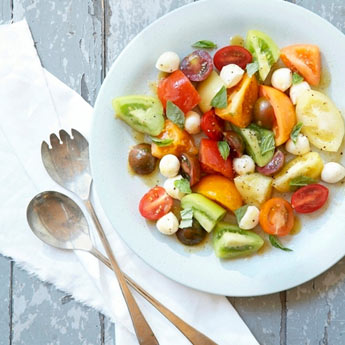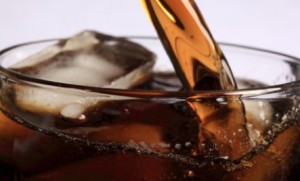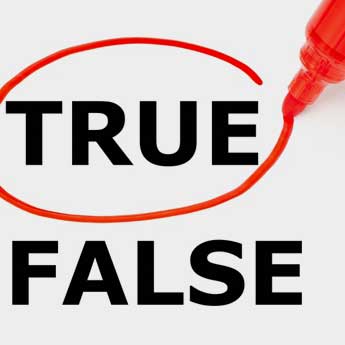
We are a Business who helps people dream again either in health or wealth. Today can be the first day of your new life, it is up to you. America was built on dreams and we help to bring them alive again. We can help with health or wealth, which do you need. Check us out - www.blazingradiance.com or call 920-452-2600
Take control of your health
 |
There is scientific evidence that suggests that supporting your immune system with proper nutrition is a good way to stay healthy.
|
Healthy Eating
As part of a healthy diet, it is important to get enough protein, carbohydrates, and healthy fats. Protein is especially important and essential for the health of the immune system.1Healthy fats, (including EPA and DHA) are important to the immune system as well.2
When choosing foods, make sure you focus on fruits and vegetables because they contain nutrients your body needs such as antioxidants, vitamin C, vitamin A, and minerals such as zinc and magnesium.
MANY FOODS HAVE MEDICINAL PROPERTIES, MAKE SURE YOU INCLUDE AS MANY AS POSSIBLE:
Mushrooms (shiitake, matsutake, and others) have a long history of helping support the immune system, especially the reishi mushroom in traditional Chinese medicine. Modern science has shown that mushrooms contain substances (such as beta-glucans and others) that can enhance immune system function.3
Garlic and onions not only taste great but have research supporting their ability to modulate immune function.4
Herbs such as turmeric,5 ginger,6 and others have long been used as spices and to preserve foods; these herbs also have benefits for our immune system.
Nutrients
Vitamins and minerals can also affect the immune system.7 Vitamins B6, B12, folate, C, E, and minerals zinc, copper, and iron all support an effective immune response.8
OTHER BENEFICIAL NUTRIENTS:
Beneficial bacteria: Research supports the relationship between probiotics and general immunity.9 Since 80 percent of your immune system is located around your digestive tract, it makes sense that having good gut flora would benefit the immune system.
Vitamin D: Vitamin D, in particular, has been the focus of much research on optimal immune system functioning. Vitamin D plays a role in the improving mucous membrane barrier functioning, the production of antimicrobial peptides (small proteins), and in overall immune support.10
Vitamin C: While there has been some controversy regarding the usefulness of vitamin C, a recent review of evidence suggests vitamin C may help the immune system of people who are exposed to extreme physical stress and also may shorten the duration of colds.11
Herbs: There are a number of herbs that have been used traditionally for immune system support. Research supports the immune modulating, antiviral, and antimicrobial activity of echinacea13, larch13, elderberry,14 and others.
Your immune system is complex and has many moving parts that all need proper nutrition in order to function well. Giving your immune system the nutritional support it needs gives you the best chance of being well prepared for the upcoming cold and flu season.
- Li P, Yin YL, Li D, Kim SW, Wu G. Amino acids and immune function. Br J Nutr. 2007 Aug;98(2):237-52. Epub 2007 Apr 3. PMID: 17403271.
- Das UN. Essential fatty acids in health and disease. J Assoc Physicians India.1999 Sep;47(9):906-11. PMID: 10778663.
- Vannucci L, Krizan J, Sima P, et al. Immunostimulatory properties and antitumor activities of glucans (Review). Int J Oncol. 2013 Aug;43(2):357-64. PMID: 2373980.
- Corzo-MartÃnez, Nieves Corzo, Mar Villamiel. Biological properties of onions and garlic. Trends in Food Science & Technology. 2007, 18:609-625.
- Gautam SC, Gao X, Dulchavsky S. Immunomodulation by curcumin. Adv Exp Med Biol. 2007;595:321-41.PMID: 17569218.
- Butt MS, Sultan MT. Ginger and its health claims: molecular aspects. Crit Rev Food Sci Nutr. 2011 May;51(5):383 93. PMID: 21491265.
- Wintergerst ES, Maggini S, Hornig DH. Contribution of selected vitamins and trace elements to immune function. Ann Nutr Metab. 2007;51(4):301-23. Epub 2007Aug 28. PMID: 17726308.
- Chandra S, Chandra RK. Nutrition, immune response, and outcome. Prog Food Nutr Sci. 1986;10(1-2):1-65. Review. PMID: 3097756.
- Purchiaroni F, Tortora A, Gabrielli M, et al. The role of intestinal microbiota and the immune system. Eur Rev Med Pharmacol Sci. 2013 Feb;17(3):323-33. PMID: 23426535.
- Schwalfenberg GK. A review of the critical role of vitamin D in the functioning of the immune system and the clinical implications of vitamin D deficiency. Mol Nutr Food Res. 2011 Jan;55(1):96-108. PMID: 20824663.
- Hemilä H, Chalker E. Vitamin C for preventing and treating the common cold. Cochrane Database Syst Rev. 2013 Jan 31;1:CD000980. PMID: 23440782.
- Hudson JB. Applications of the phytomedicine Echinacea purpurea (Purple Coneflower) in infectious diseases. J Biomed Biotechnol. 2012;2012:769896. PMID: 22131823.
- Kelly GS. Larch arabinogalactan: clinical relevance of a novel immune-enhancing polysaccharide. Altern Med Rev. 1999 Apr;4(2):96-103. PMID: 10231609.
- Roxas M, Jurenka J. Colds and influenza: a review of diagnosis and conventional, botanical, and nutritional considerations. Altern Med Rev. 2007 Mar;12(1):25-48. PMID: 17397266.
- posted by Shaklee 11/04/2014
Reduce your risk for colds and flu
Also start on Nutriferon for you immune system. Purchase here.
 |
According to the Centers for Disease Control (CDC), 5 to 20 percent of the population will get the flu every year, and more than 200,000 people are hospitalized every year because of flu-related complications.1 The cold is much more common, with the average person getting the cold around 2 to 3 times per year.2
|
There are ways to reduce your risk of getting these viral infections—both before (and during) the cold and flu season.
Stop touching your face: Studies suggest that people touch their face around 3 to 4 times every hour.3 While that may not sound like that often, you touch your face far more than you wash your hands. The key here is that each time you touch your mouth or nose you are risking transferring bacteria and viruses from contaminated surfaces to your body. This "self-inoculation" is the primary way colds and flu spread through a population (you can also contract a cold or flu when someone coughs or sneezes and you breathe it in). Scientists who study the spread of disease suggest that learning to avoid touching your face may be the most important thing you can do to reduce your risk of getting a cold or flu.4
Wash your hands often: Even if you train yourself to avoid touching your face, you still need to wash your hands often. Every surface your hands come in contact with has the potential to be contaminated with bacteria and viruses. Washing with warm soapy water and scrubbing for at least a minute is a good habit to practice throughout the year (and not just during cold and flu season).
Exercise: The key to understanding the benefits of exercise on our immune systems is that it all depends on how much you exercise. Moderate exercise does appear to boost immunity and inactive people do seem to get more colds than active people, but extreme exercise (especially in elite athletes training for competition) does the opposite.5 If you have a moderate exercise program, continue that throughout the year to get the most benefit from exercise. If you don't currently exercise, start slowly and build up to a regular routine.
Sleep: The importance of good sleep to your health can't be underestimated. While not many studies look at sleep quality and the immune system, a small study of healthy young men reported a drop in the number and function of white blood cells (neutrophils) with just one night's poor sleep.6
Diet: Your immune system relies on you to nourish your body well in order to have on hand the basic building blocks for its many functions. The general recommendation for a healthy immune system is to eat plenty of fruits and vegetables, avoid excessive alcohol intake, and eat a low-fat, low-sugar diet.
The cold and flu season is on its way and starting now is the best way to be prepared. Developing healthy habits not only helps you in the upcoming season, but for the rest of your life.
- http://www.cdc.gov/flu/about/qa/disease.htm
- http://www.cdc.gov/features/rhinoviruses/
- Alonso WJ, Nascimento FC, Shapiro J, Schuck-Paim C. Facing ubiquitous viruses: when hand washing is not enough. Clin Infect Dis. 2013 Feb;56(4):617. PMID: 23155148.
- http://www.tandfonline.com/doi/abs/10.1080/13548506.2011.564188#.VE_Wk1ftiiA
- Moreira A, Delgado L, Moreira P, Haahtela T. Does exercise increase the risk of upper respiratory tract infections? Br Med Bull. 2009;90:111-31. PMID: 19336500.
- Christoffersson G, Vågesjö E, Pettersson US, et al. Acute sleep deprivation in healthy young men: Impact on population diversity and function of circulating neutrophils. Brain Behav Immun. 2014 May 28. PMID: 24878171.
Do Sodas Cause Arthritis?
This is a very interesting article from
Will Sodas Make You Hurt?
Author: Dr. Stephen Chaney
 In previous health tips from the professor I have shared
that soda consumption can cause weight gain and heart disease. As if that weren’t reason
enough to avoid sodas, recent headlines suggest that sodas can also cause
rheumatoid arthritis. That is a pretty strong claim, so let’s look at the study
behind those headlines.
In previous health tips from the professor I have shared
that soda consumption can cause weight gain and heart disease. As if that weren’t reason
enough to avoid sodas, recent headlines suggest that sodas can also cause
rheumatoid arthritis. That is a pretty strong claim, so let’s look at the study
behind those headlines. Do Sodas Cause Arthritis?
This study (Hu et al., American Journal of Clinical Nutrition, 100:
959-967, 2014) followed 79, 570 women enrolled in the first Nurse’s Health Study
(NHS) and 107,330 women enrolled in the second Nurse’s Health Study (NHS II) –
that’s a total of 186,900 women – for at least 20 years. The women were aged
25-55 at the beginning of the studies and 857 of them developed rheumatoid
arthritis over the next 20+ years.
All of the
participants in the study filled out a questionnaire covering medical history,
lifestyle and chronic disease at entry into the study and every two years
afterwards. Compliance to this protocol was >90%, which is excellent for
this type of study. The results were pretty impressive:
- Women who consumed ≥ 1 serving of sugar sweetened soda/day had a 63% higher risk of developing rheumatoid arthritis compared to women who consumed no sugar sweetened soda or consumed < 1 serving/month.
- The association between sugar-sweetened soda
consumption and rheumatoid arthritis was much
stronger for late-onset rheumatoid arthritis than it was for early-onset rheumatoid arthritis. When the authors restricted their analysis to women who developed rheumatoid arthritis after age 50, consumption of sugar sweetened sodas was associated with a 2.64-fold higher risk of developing rheumatoid arthritis (That’s a 264% increase).
- The type of sugar did not appear to matter. Sodas sweetened with sucrose and high-fructose corn syrup were equally likely to increase the risk of rheumatoid arthritis.
- There was no association between diet soda consumption and rheumatoid arthritis.
What Are The Strengths and Weaknesses Of The Study?
Strengths of The Study:
The strengths of the study are fairly obvious.
This was a very large study and the effects (64%) and (264%) were also large. Those aren’t trivial differences. The size of the study and the magnitude of the effects bolster confidence in the outcome of the study.
This was a very large study and the effects (64%) and (264%) were also large. Those aren’t trivial differences. The size of the study and the magnitude of the effects bolster confidence in the outcome of the study.
Weaknesses of
The Study:
This type of study measures associations. It doesn’t prove cause and effect. Therefore, the headlines saying “Soda Consumption is Associated With Arthritis” are more accurate than those saying “Sodas May Cause Arthritis”.
This type of study measures associations. It doesn’t prove cause and effect. Therefore, the headlines saying “Soda Consumption is Associated With Arthritis” are more accurate than those saying “Sodas May Cause Arthritis”.
In studies
of this kind we can never be sure whether the variable that was measured (soda
consumption in this case) was responsible for the outcome or whether it was some
other variable that wasn’t measured that was responsible for the outcome. In
particular, the women who developed rheumatoid arthritis were also more likely
to:
- Have lower incomes.
- Exercise less.
- Have higher energy (calorie) intake.
- Have poorer diets.
- Take fewer multivitamins and other supplements.
The authors tried their best to compensate for these differences
statistically, and the fact that the very large effects of soda consumption on
rheumatoid arthritis occurrence were not significantly affected when these
differences were taken into account adds confidence to their conclusions.
However, it is never possible to exclude the possibility that some other
variable they did not measure was responsible for the increase in rheumatoid
arthritis.
Are Diet Sodas Off the Hook?
 This study showed no association between diet soda
consumption and rheumatoid arthritis. Previous studies have suggested that diet
sodas don’t increase the risk of heart disease to the same extent as
sugar-sweetened sodas. Does that mean that you should just start drinking diet
sodas rather than sugar sweetened sodas?
This study showed no association between diet soda
consumption and rheumatoid arthritis. Previous studies have suggested that diet
sodas don’t increase the risk of heart disease to the same extent as
sugar-sweetened sodas. Does that mean that you should just start drinking diet
sodas rather than sugar sweetened sodas?
The answer is
probably not. As I have pointed out in “Health Tips From the Professor”, and has been
confirmed by a recent meta-analysis of 24 clinical studies (Miller and Perez,
American Journal of Clinical Nutrition, 100: 765-777, 2014), double blind
studies in which all other caloric intake is carefully controlled generally show
that people tend to gain slightly less weight when consuming diet sodas than
when consuming sugar sweetened sodas.
But that same
study shows in the real world, people consuming diet sodas are just as likely to
be overweight as people consuming sugar sweetened sodas. People seem to
compensate for the calories saved with diet sodas by consuming more Big Macs,
Mrs. Fields cookies and extra large Starbucks Lattes. In the real world, water
is the only non-caloric beverage that is actually associated with lower weight.
Is It Enough To Just Stop Drinking Sodas?
I have often paraphrased that famous line from Western movies: “Just put
down that soda and back away, and nobody gets hurt”. But is it that simple? Can
you really prevent rheumatoid arthritis just by drinking less soda?
Once again, the answer is probably no. There are a number of factors that
can increase your risk of developing rheumatoid arthritis. Experts will tell you
that the causes of rheumatoid arthritis are largely unknown, but that genetic
predisposition, smoking and excessive alcohol use can increase your risk.
However, because rheumatoid arthritis is an inflammatory disease I would
add overweight; diets high in animal protein, saturated fats, trans fats and
sugar; food allergies; gut health issues; stress & exhaustion and chronic
infections – and lack of fresh fruits and vegetables, omega-3 fatty acids and
regular exercise.
The clinical study I described above found that soda consumption was much
more strongly associated with late onset rheumatoid arthritis than early onset
rheumatoid arthritis. Based on those data I would speculate that early onset
rheumatoid arthritis may be more strongly influenced by genetics and other
lifestyle factors, whereas late onset rheumatoid arthritis may be more strongly
influenced by sugar sweetened sodas and other sugary foods. Only time will tell
if my hypothesis is true.
The Bottom Line:
1) A
recent study reported that women who consume ≥ 1 serving of sugar sweetened
soda/day have a 63% higher risk of developing rheumatoid arthritis compared to
women who consume no sugar sweetened soda or consume < 1 serving/month.
2) The association between sugar-sweetened soda consumption and rheumatoid arthritis is much stronger for late-onset rheumatoid arthritis than for early-onset rheumatoid arthritis. For women who first develop rheumatoid arthritis after the age of 50, consumption of sugar sweetened sodas is associated with a 2.64-fold higher risk of developing rheumatoid arthritis (That’s a 264% increase).
3) The type of sugar does not appear to matter. Sodas sweetened with sucrose and high-fructose corn syrup are equally likely to increase the risk of rheumatoid arthritis.
4) There was no association between diet soda consumption and rheumatoid arthritis. However, this does not mean that diet sodas are a good thing. Consumption of diet sodas is just as likely to be associated with obesity as is consumption of sugar sweetened sodas, and some recent studies suggest that consumption of diet sodas is associated with high blood pressure.
5) This was a very large and well done study, but it only measures associations, not cause and effect. Further studies will be needed to confirm this observation. However, we already know that sodas are bad for us. This may be just one more reason to minimize our consumption of sodas.
6) We shouldn’t assume that we can prevent rheumatoid arthritis by simply cutting sodas out of our diet. Arthritis has multiple causes (see article above). We should aim for a healthier overall lifestyle if we wish to reduce our risk of developing rheumatoid arthritis and other diseases.
7) Osteoarthritis is much more common than rheumatoid arthritis. This study did not include women with osteoarthritis, so it is uncertain whether these results will apply to osteoarthritis as well.
8) Men are much less likely to develop rheumatoid arthritis than women, so it will be difficult to do a comparable study in men. However, it is likely that the same association between soda consumption and rheumatoid arthritis would be seen in men as well.
2) The association between sugar-sweetened soda consumption and rheumatoid arthritis is much stronger for late-onset rheumatoid arthritis than for early-onset rheumatoid arthritis. For women who first develop rheumatoid arthritis after the age of 50, consumption of sugar sweetened sodas is associated with a 2.64-fold higher risk of developing rheumatoid arthritis (That’s a 264% increase).
3) The type of sugar does not appear to matter. Sodas sweetened with sucrose and high-fructose corn syrup are equally likely to increase the risk of rheumatoid arthritis.
4) There was no association between diet soda consumption and rheumatoid arthritis. However, this does not mean that diet sodas are a good thing. Consumption of diet sodas is just as likely to be associated with obesity as is consumption of sugar sweetened sodas, and some recent studies suggest that consumption of diet sodas is associated with high blood pressure.
5) This was a very large and well done study, but it only measures associations, not cause and effect. Further studies will be needed to confirm this observation. However, we already know that sodas are bad for us. This may be just one more reason to minimize our consumption of sodas.
6) We shouldn’t assume that we can prevent rheumatoid arthritis by simply cutting sodas out of our diet. Arthritis has multiple causes (see article above). We should aim for a healthier overall lifestyle if we wish to reduce our risk of developing rheumatoid arthritis and other diseases.
7) Osteoarthritis is much more common than rheumatoid arthritis. This study did not include women with osteoarthritis, so it is uncertain whether these results will apply to osteoarthritis as well.
8) Men are much less likely to develop rheumatoid arthritis than women, so it will be difficult to do a comparable study in men. However, it is likely that the same association between soda consumption and rheumatoid arthritis would be seen in men as well.
These statements have not been evaluated by the Food and Drug Administration.
This information is not intended to diagnose, treat, cure or prevent any
disease.
Dr. Steve Chaney
Health Tips From the Professor
stevechaneytips@gmail.com
www.healthtipsfromtheprofessor.com
Health Tips From the Professor
stevechaneytips@gmail.com
www.healthtipsfromtheprofessor.com
What’s your immunity IQ?
What’s your immunity IQ?
 |
There are many misperceptions about the cold and flu; take our immune quiz to see how cold/flu-smart you are:
|
Answer true or false for these questions:
Getting wet in the rain will make you sick. (false) There is no evidence that damp cold weather and the risk of getting a cold are related. Chock it up to being an old wives' tale or the ancient belief in "ill winds," but modern science does not support a connection between being cold and getting a cold or flu.
Flu is a virus, cold is a bacteria. (false) Both cold and flu are viruses. There are well over 200 different strains of the cold virus (rhinovirus being the most common) and flu viruses mutate and change every year.
The flu is harmless. (false) The flu is far from harmless. According to the CDC, in a normal year somewhere between 3,000 and 49,000 people die from the flu (depending on the severity, the spread, and the type of flu virus). In 1918, approximately 675,000 people died in the United States from the Spanish flu. On the other hand, the common cold is rarely harmful—unless it leads to other infections.
Antibiotics are no help for cold or flu. (true) Both the common cold and flu are the result of a virus, and antibiotics cannot help reduce the severity or duration of a cold. Doctors do occasionally prescribe antibiotics to people with colds and flu to help treat secondary bacterial infections such as sinusitis, ear infections, bronchitis, and other infections.
Once you have the flu, you won't have it again that season. (The answer to this one is both false and true.) You won't get the same cold or flu once you have had it, but that doesn't mean you cannot get another strain. There are often multiple types of cold and flu circulating at the same time; it is very possible to have one and then have another. This is also the reason why the flu shot is not 100 percent effective: the flu shot is effective against one strain and there is always the possibility of another strain infecting you.
You are only contagious when you have symptoms? (false) You are most likely to spread the flu five to seven days from when you first feel bad. When you have a cold, you are the most contagious during the first three days of getting that cold (during that sore throat phase). You can transmit either virus to other people by touching your nose or mouth and then touching another surface they touch (doorknobs, phones, etc.) or by coughing or sneezing.
Kids get more colds and flu? (true) According to the CDC, adults have an average of 2 to 3 colds per year, and young children may get as many as 8 to 10 each year before the age of two.
10 Year Old Boy With Stomach Pain
 |
| BUY NOW |
My 10 year old grandson has been playing soccer each Saturday for the last couple of months. Almost without exception he would experience pain in his stomach and have to sit out most of the 2nd half of the games. This could have been caused by anxiety. He has had this problem off an on for a while now during certain situations. Two Saturdays ago,before his game, he sipped on tea that his mother had made from the Stomach Soothing Complex.. He was able to play the entire game without the stomach pain. This past Saturday his soccer tournament was held. The games were shortened from one hour to 36 minutes in order to be able to complete the tourney in one day. His team played 3 games and he was able to play without the stomach pain sidelining him. I am so thankful that we had the Complex to give him! Thanks Shaklee for the Stomach Soothing Complex!
Subscribe to:
Posts (Atom)


